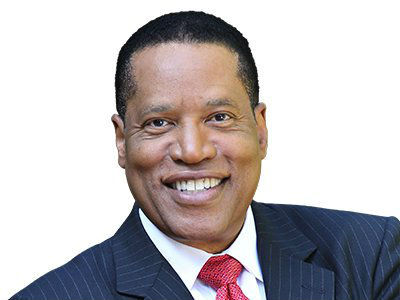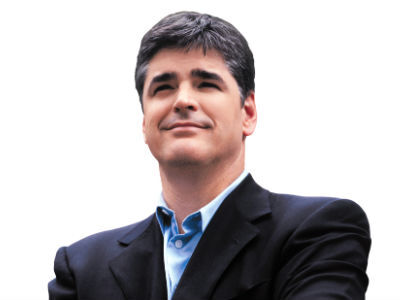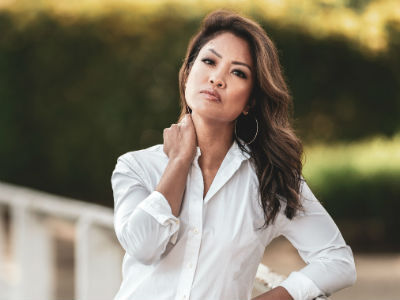How brands are winning over customers with creative spins on familiar favorites
Lifestyle

Audio By Carbonatix
10:00 AM on Wednesday, August 13
By Marianne Hayes for Shopify, Stacker
How brands are winning over customers with creative spins on familiar favorites
There’s a common misconception that launching a profitable business requires a groundbreaking new idea. The truth is, you don’t have to invent a completely new product to find success as an entrepreneur. Sometimes all it requires is applying a fresh perspective to a product that already exists.
Take the drinkware company Stanley: Its now-signature water bottle, the Stanley Quencher, was on the verge of being discontinued due to poor sales when it made one simple move that changed the game. Instead of marketing to blue-collar working men, it pivoted to millennial women—and profits soared.
Shopify talked to the following brands about how they found success through fresh spins on familiar classics, from finding a previously untapped market to bringing new creative vision to a stagnant industry.
Appeal to a new audience
The skin care industry is marketed predominantly to women, but they’re not the only ones using these products. Husband-and-wife team Jen Yu and Alex Penfold got the idea to start their men’s skin care line, Jaxon Lane, when Penfold kept stealing Yu’s products.
“I’m coming home from work and he’s in bed, he’s got a sheet mask on,” Yu says with a laugh. “He was a guy, like many men, that did not really do much skin care. It was like treating acne when he was a teenager, but no real consistent routine.”
It didn’t take long for Penfold to start seeing a difference in his skin from using Yu’s products, but there were some snags. For starters, face masks designed for women often are too small for men’s faces—and they don’t account for facial hair.
So, the couple launched Jaxon Lane to make K-beauty products more accessible to men, but that didn’t mean simply taking women’s products and slapping a blue label on them. Instead, their products feature Korean skin care ingredients that are specially formulated for men’s skin.
Yu says this sets them apart from traditional men’s skin care products, which often lean on heavy fragrances and dyes to appeal to a masculine audience. “I think we’re the only men’s brand that’s really marketing to men,” Yu says. “We want to catch their attention, but the inside of the product is functionally designed for them.”
Jaxon Lane started with the Bro Mask, which is sized up and comes in two pieces, allowing men with facial hair to use only the top half. It’s since expanded to products like sunscreen, moisturizer, and cleanser—all in simple, black-and-white packaging.
Use creative branding to offer a fresh perspective
If you thought there was nothing new to say about water, then you’ve underestimated Liquid Death—and you wouldn’t be alone. The brand’s edgy, countercultural marketing hinges on the question: “What if healthy food didn’t have to suck in the way it’s branded?” says Andy Pearson, Liquid Death’s vice president of creative, on Shopify Masters.
The brand, which is best known for its tallboy cans of mountain water, doesn’t take itself too seriously. And that’s part of its appeal, and what’s established its niche among metalheads—and anyone who appreciates alternative humor and healthy beverages. Instead of pouring money into digital ads or salesy social media posts, it’s focused on creating genuinely entertaining content that people actually want to see.
“That’s how you really take these tiny budgets and make something exponentially bigger than you ever could,” says Pearson. “For us that was how we grew the brand so quickly.”
It’s an untraditional approach that’s often reserved for junk food, energy drinks, and beer—not healthy beverage brands. But Liquid Death leans into being playful and a little dark. After all, its slogan is “murder your thirst.”
“The really cool flip is that we have all kinds of brands and celebrities and people coming to us actively wanting to do something with us because we have created this kind of cultural thing,” Pearson says. “We just have more opportunities, bigger opportunities, to take our weirdo brand of humor and satire to the world in a bigger way than we ever got to before.”
That includes partnerships with Tony Hawk, Martha Stewart, Yeti, and Depend (for their infamous black pleather pit diaper), as well as a wildly popular Super Bowl ad. In the end, Liquid Death is selling the brand, and the product follows.
Good Girl Snacks has taken a similar approach to put a fun and quirky spin on a pantry staple: pickles.
Visit the brand’s instagram account and you’ll find pops of pink, bikini-clad gals at the grill, and pickle margaritas. The brand’s identity is flirty and a little cheeky, and this strategy led it to become a fan favorite among Gen Z and millennial women, receive organic promotion from influencers like Alix Earle, and partner with high-end grocers like Erewhon and Bristol Farms.
“We started thinking and brainstorming around what we could do in the space and having a lot of fun with it, whether that was our really fun, colorful label ideas, the name of the brand being Good Girl Snacks and Hot Girl Pickles, all of our ideas with photography and how we’ve kind of created this very provocative nature to the images we share,” says cofounder Leah Marcus.
Make it approachable (without sacrificing quality)
Olive oil is one of those staple products that’s in almost every kitchen in America. That can be a good thing in the sense that virtually everyone is buying it—but how do you stand out in such a crowded market? Andrew Benin, founder of the olive oil brand Graza, knew that he needed more than just a high-quality product. A huge part of Graza’s success has been its affordable price point and ability to appeal to home chefs.
“In our category, generally, it was pretty easy to see that, on one side, things were really luxurious,” Benin says. “And on the other side, things were really pared back and private label and no investment in product quality or brand.”
Graza cut through to the middle. Instead of charging a premium or creating a bare-bones product, Graza is marketed as an affordable, quality option that can be used every day. This approachability is reinforced in its packaging: green plastic squeeze bottles with neon caps. While a departure from the bottles typically found on grocery store shelves, the style is popular among professional chefs for its utility. Not only does Graza’s packaging elevate the home cook’s experience, but it’s also instantly recognizable even when the brand isn’t being overtly promoted.
“Sometimes you don’t even see the whole bottle,” says Benin. “These micro moments in the creator economy and in content creation are what count. These habitual moments that you see a green cap there, you see a green cap there, you know, we didn’t engineer it to be that way. We didn’t think that would happen. We’re reaping the benefits of it, of course.”
Elevate the vibe
If you’re focusing on a product that’s been done a thousand times before, you’ll need to figure out how to get a leg up over the competition. Opting for a redesign could help you gain market share.
This was a core decision for Natalie Holloway and Max Kislevitz, who cofounded Bala, a brand that puts a stylish twist on traditional workout accessories. Their flagship offering, the Bala Bangles, reimagined wrist and ankle weights as colorful, soft-covered, bracelet-style wraps that are also functional. This allowed Bala to tap into a new market: active, fashion-conscious consumers.
“The Bangles were going nuts from a sales perspective,” Kislevitz says. “And it was at that time that we realized that no one had really done for fitness equipment and accessories what had been done for the adjacencies, like athleisure or boutique fitness.”
Instead of courting athletes to be the face of Bala, Kislevitz and Holloway turned to high-end fashion brands like Ralph Lauren and Pucci, as well as fitness giants like Equinox.
“I would say that partnerships are an important piece of our marketing puzzle, which might not have been my understanding at the outset,” Kislevitz says. “When Nat and I sat down and sketched out Bangles, I maybe would not have envisioned us eventually partnering with Ralph Lauren to amplify the brand. But I think Bala enjoys this amazing community of folks that have formed around it. We have tried to be irreverent and playful in a landscape of really serious fitness brands, and partnerships have actually allowed us to step outside what most folks would expect of a fitness company.”
Don’t be afraid to pivot
Your business idea, offerings, and marketing strategies aren’t set in stone. You can expect things to evolve as you go, especially if you’re using customer data and analytics to inform your next moves.
Chomps cofounders Peter Maldonado and Rashid Ali originally expected their protein-packed, grass-fed beef jerky sticks to be a perfect match for the CrossFit community—and focused their branding and marketing on this crowd. However, some market research revealed their customer base was made up mainly of women. This inspired them to pivot, which included redesigning their packaging and marketing approach.
“We needed something more female-friendly,” Maldonado says, adding that they softened their branding to be less masculine and more approachable. “And again, all of these decisions were being made based on actual feedback from customers or panel data.”
Chomps is now a go-to brand for active women, including health-conscious moms looking for better snack options for their families. At the same time, Chomps still casts a wide net, appealing to anyone on the hunt for a healthy bite.
This story was produced by Shopify and reviewed and distributed by Stacker.

























